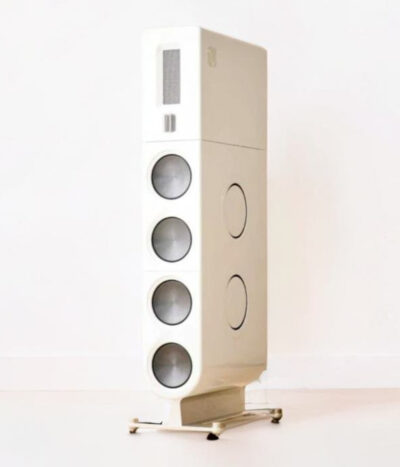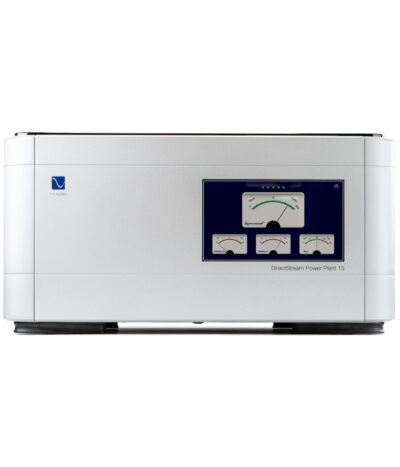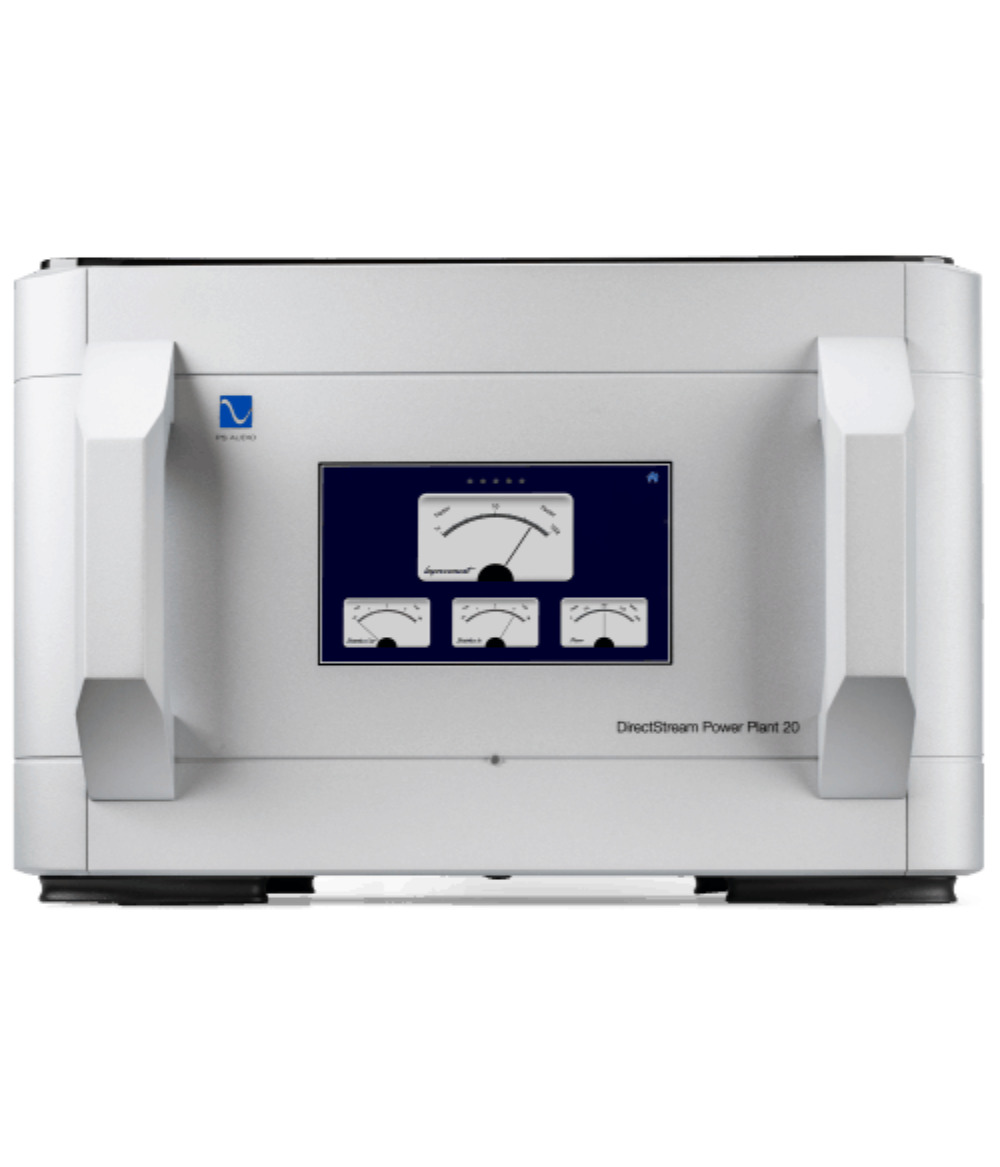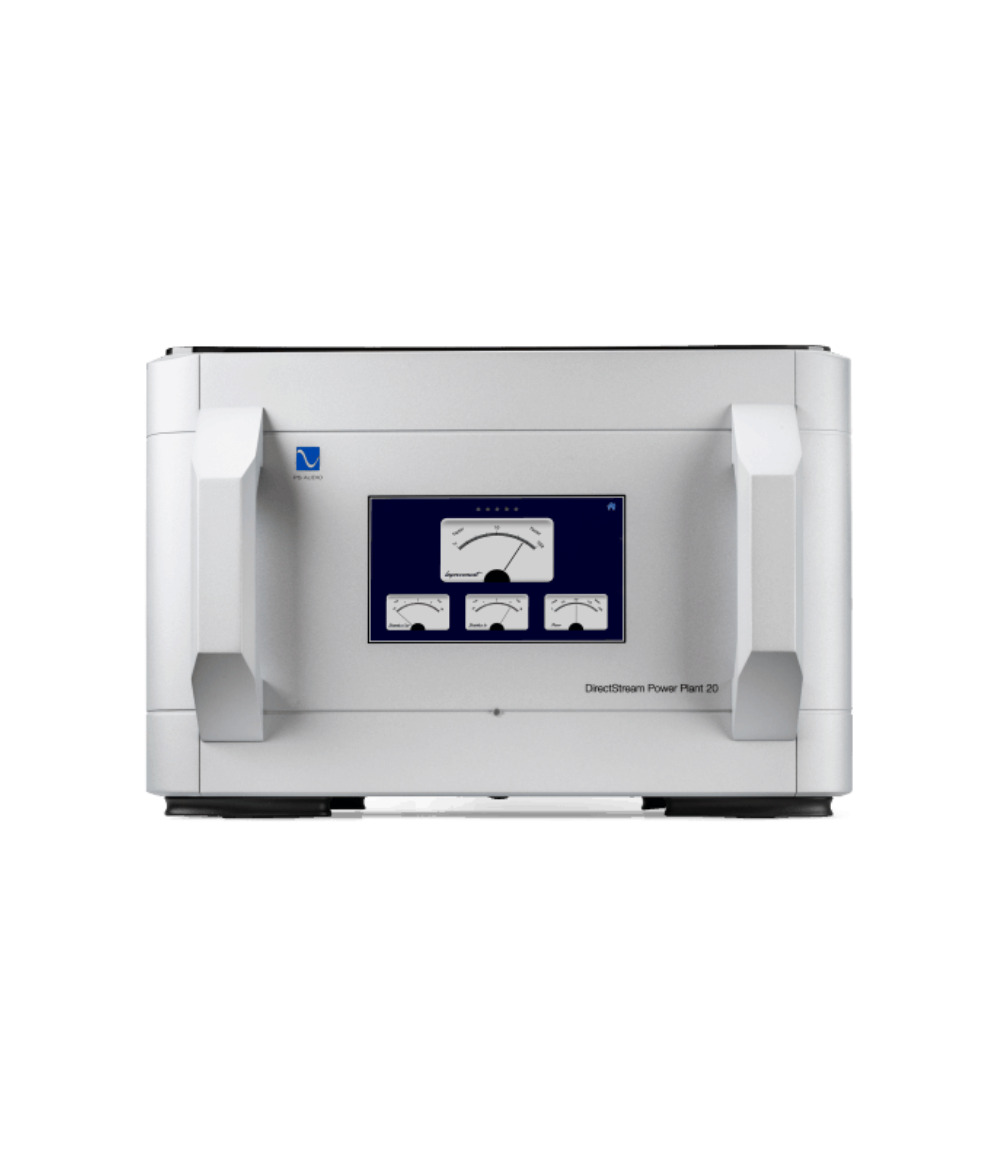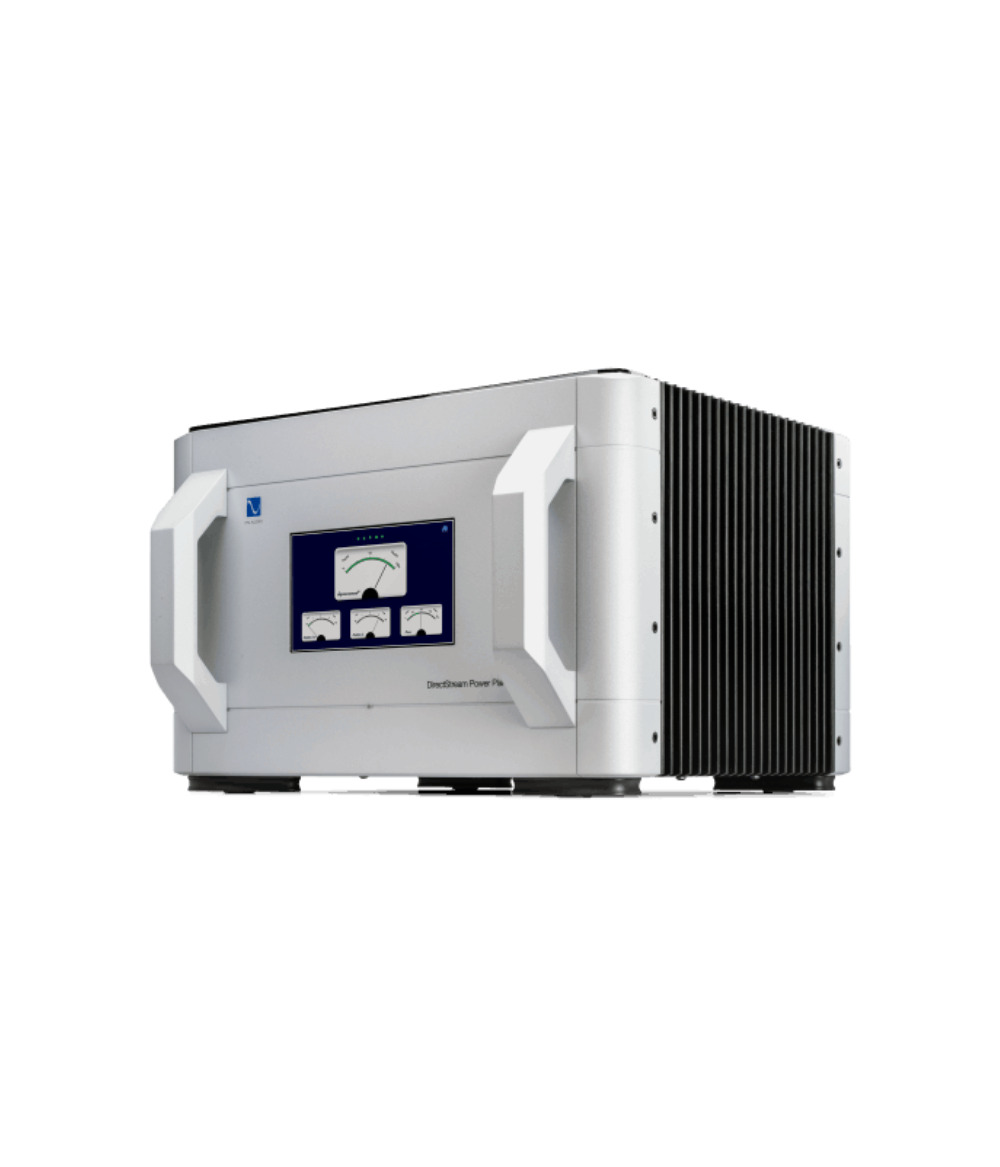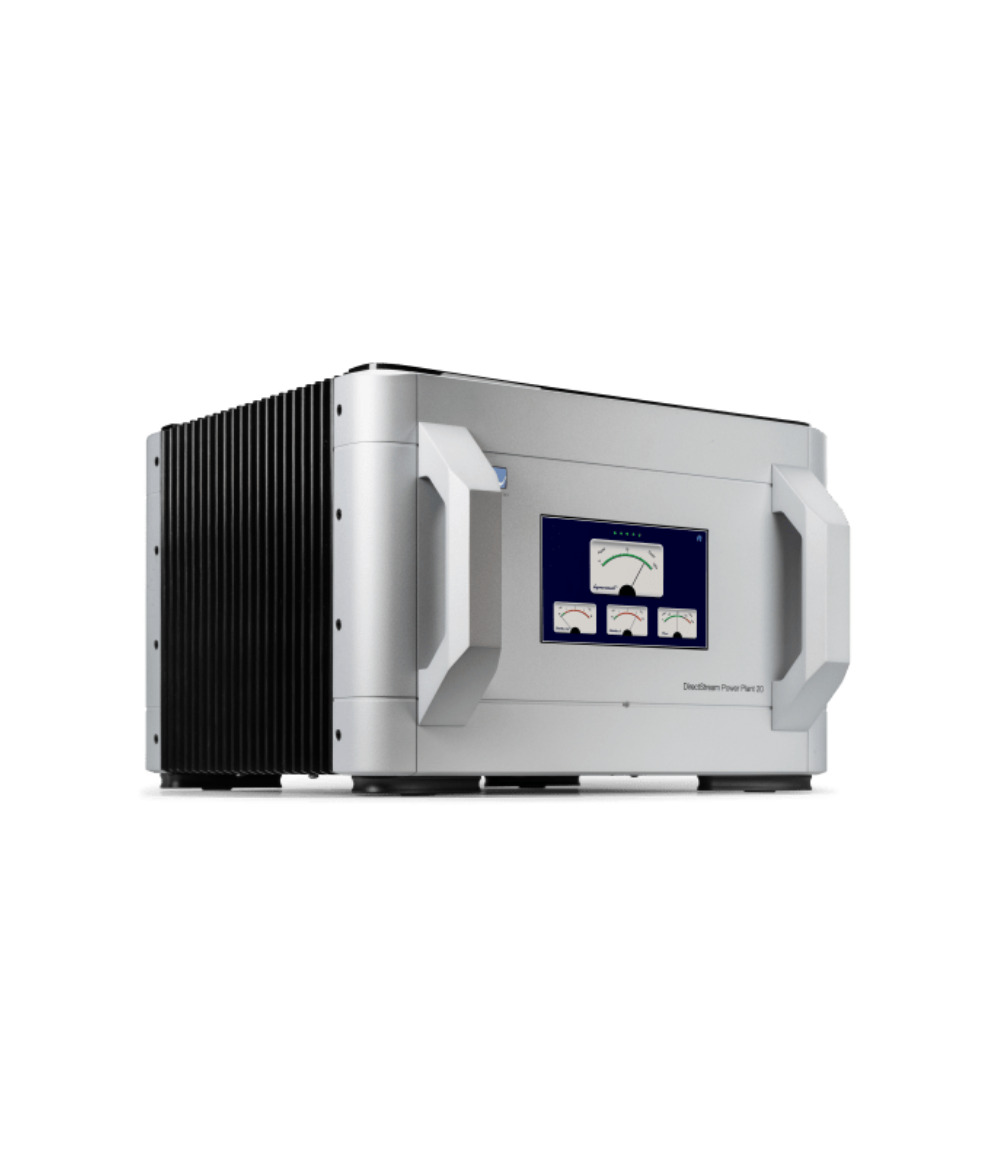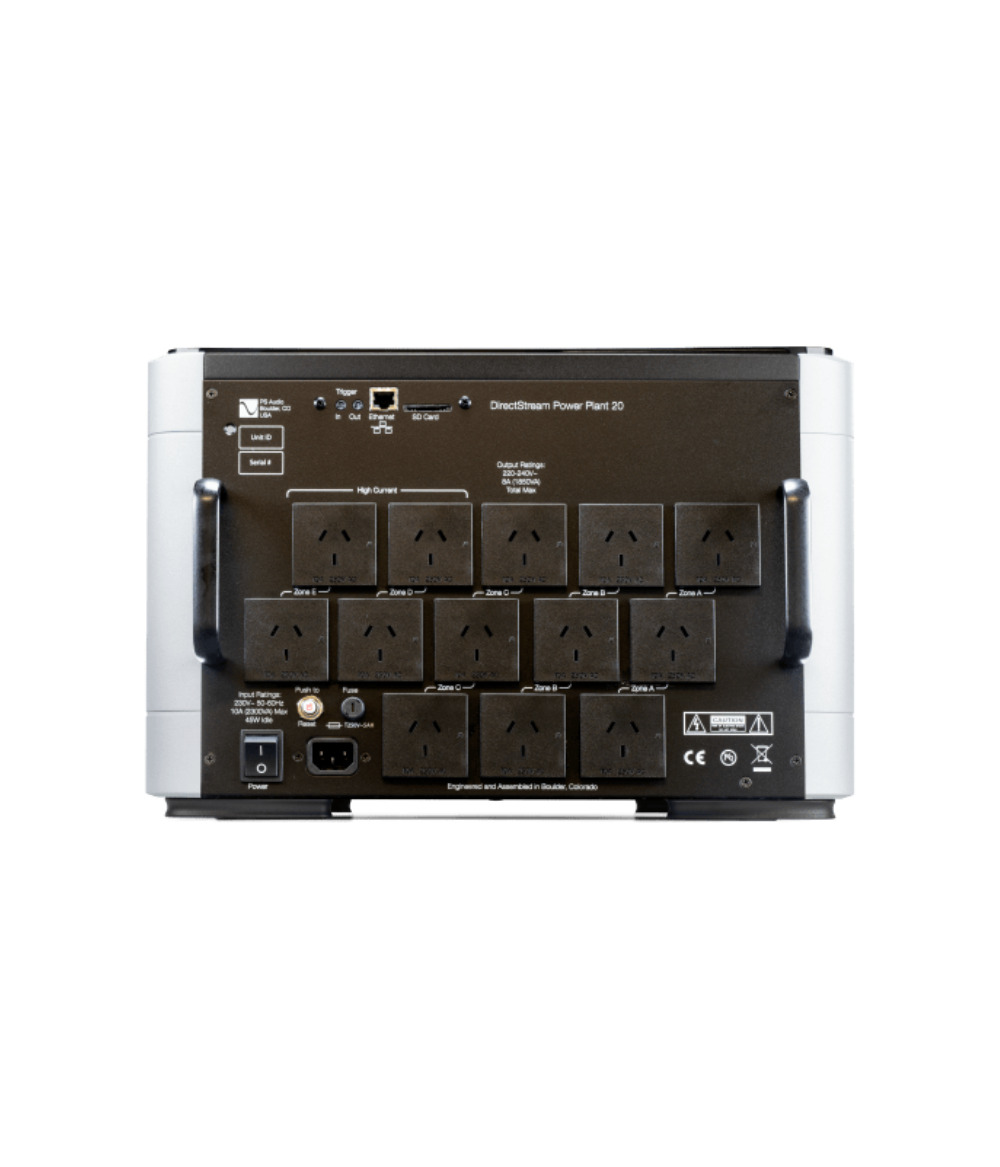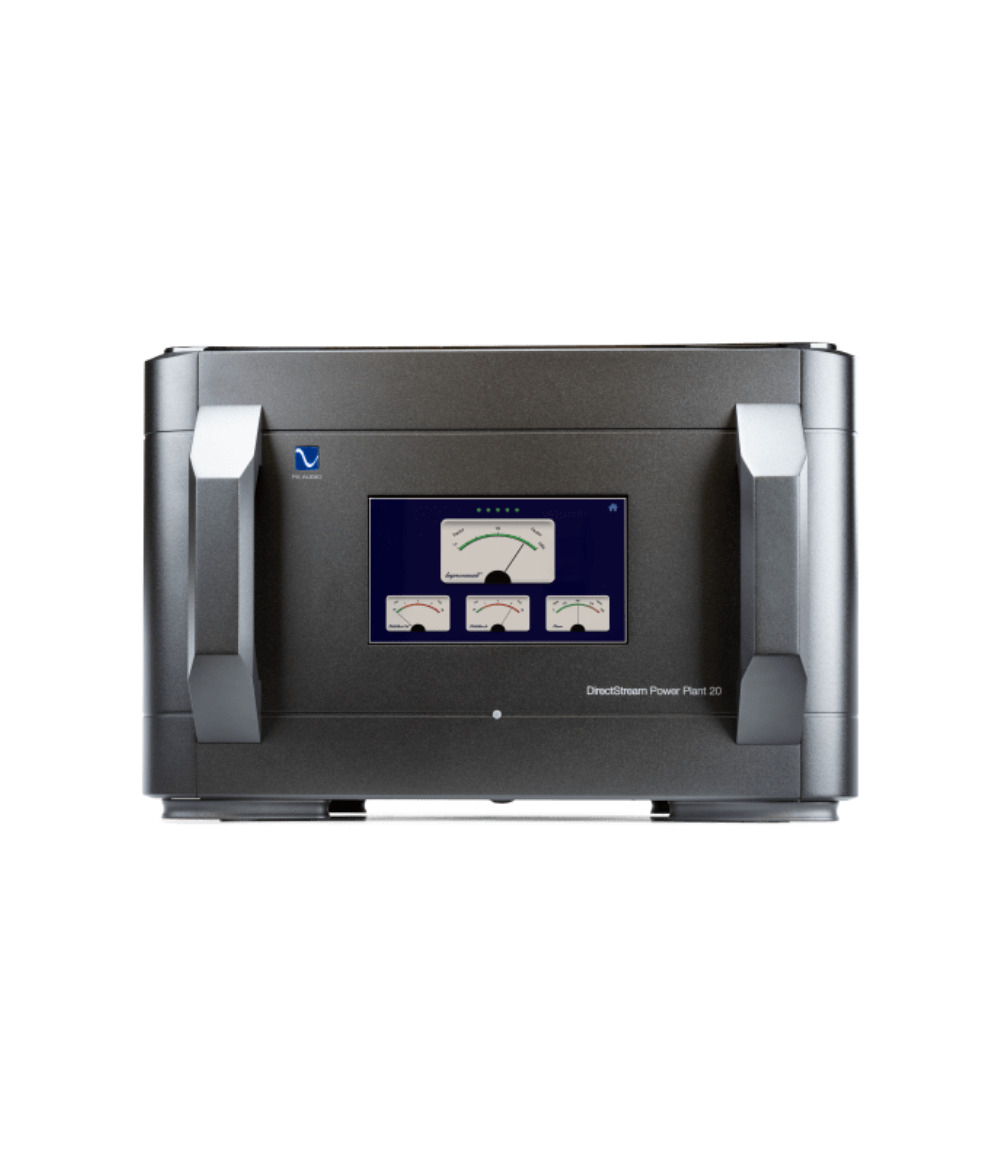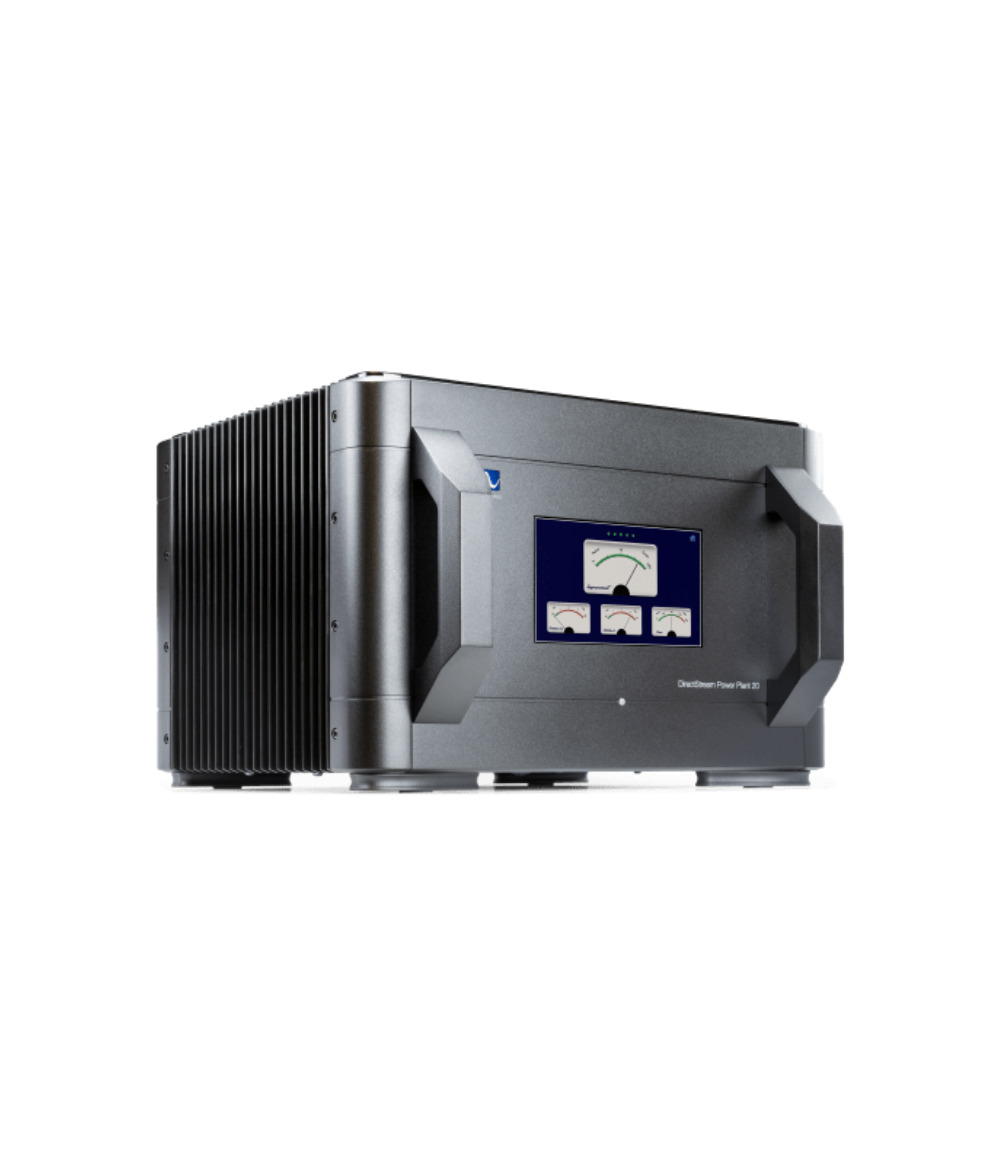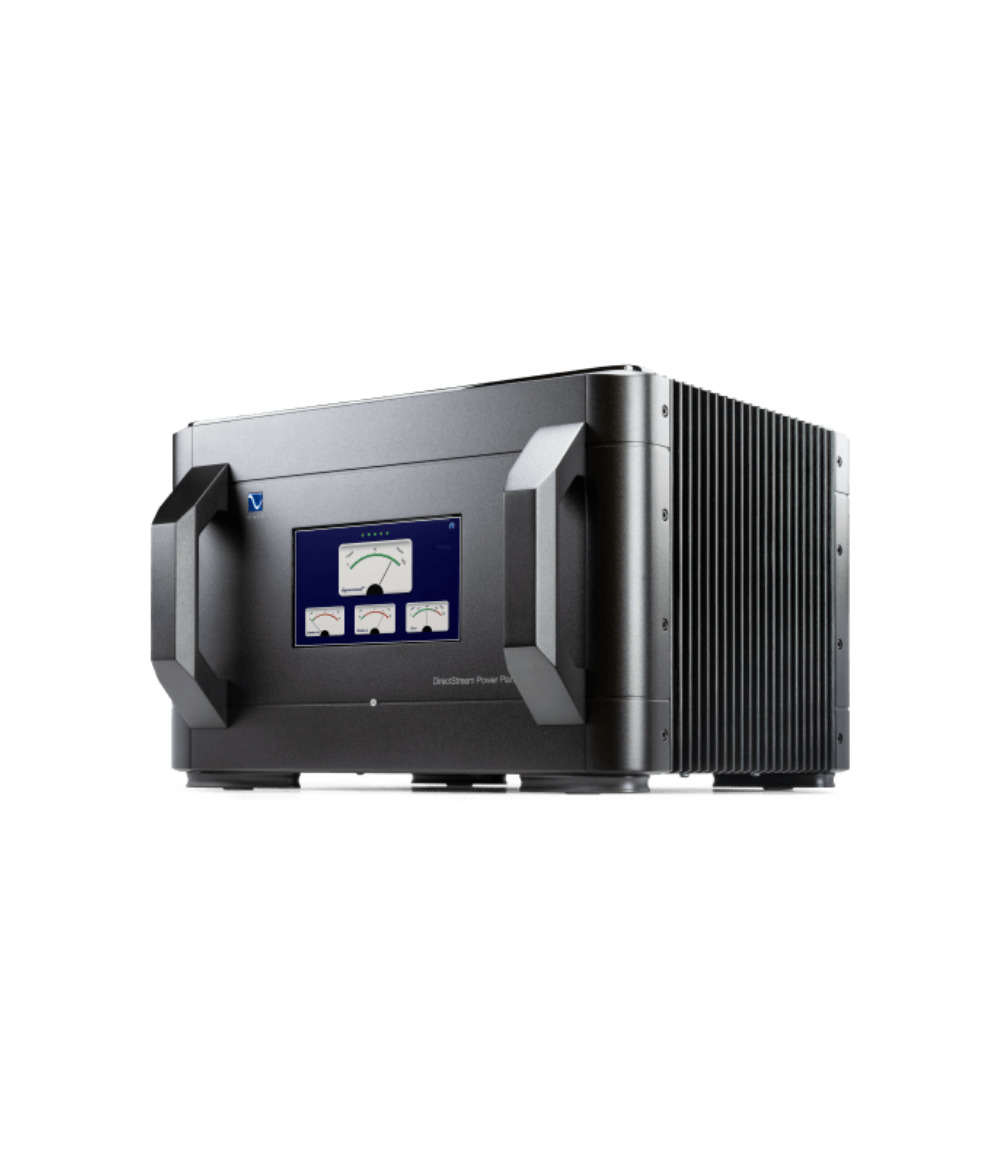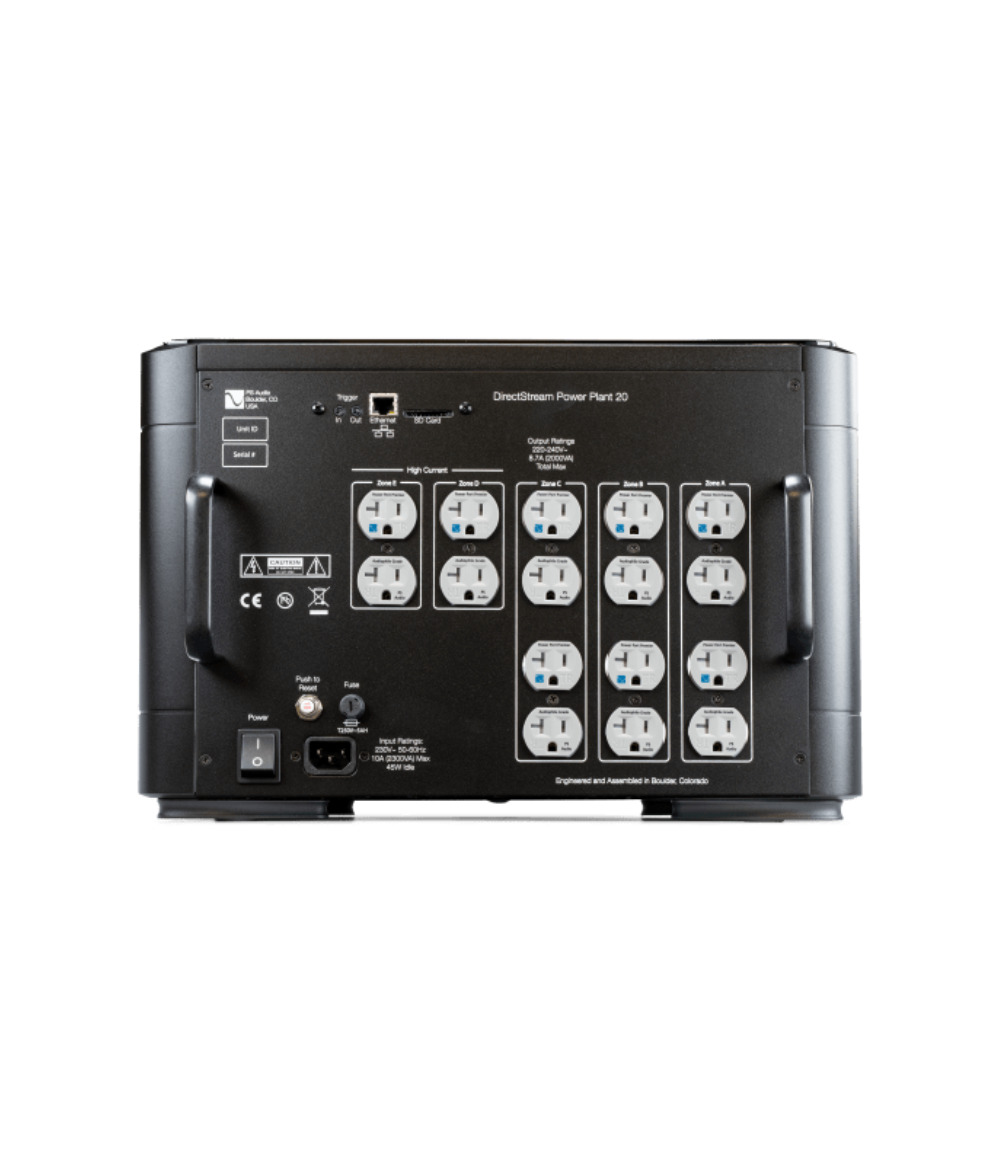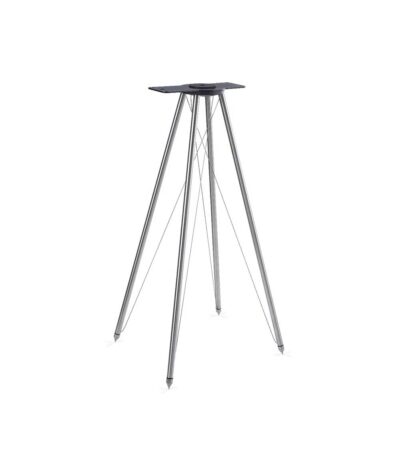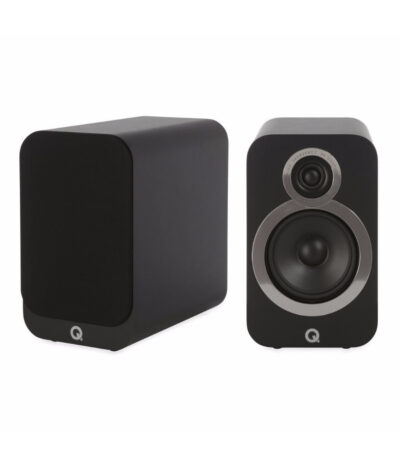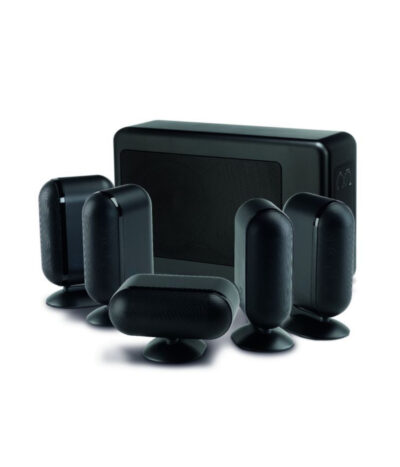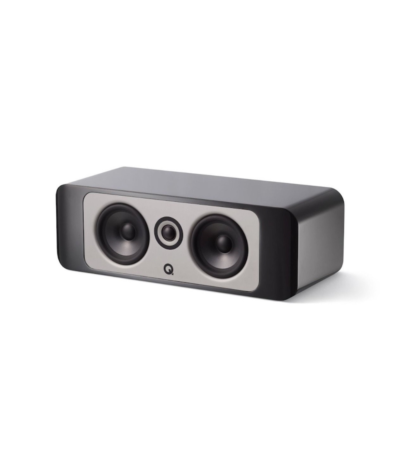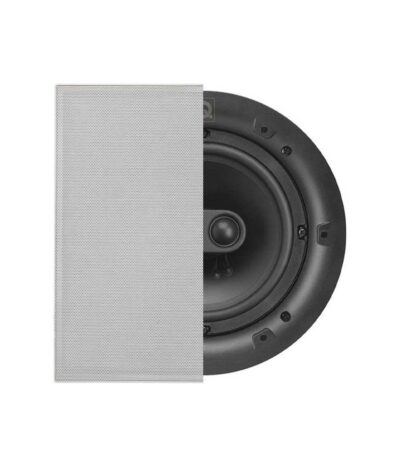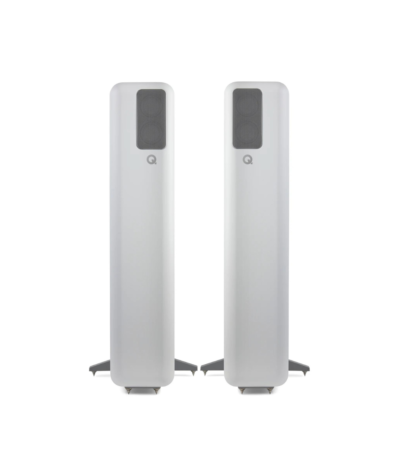DESIGN
APPLICATION
Technology
OVERVIEW
The P20 takes in your home’s noisy, distorted, and unregulated AC and outputs pure and perfect power that dramatically enhances sound quality. It does this by rebuilding the AC, lowering output impedance, and regulating the voltage. Low output impedance is critical to maintaining a dynamic presentation. Powering equipment through a passive power conditioner only worsens the problem and should be avoided. The Power Plant, on the other hand, has such low output impedance (0.008Ω vs. typical 0.4Ω) that even the hungriest of amplifiers won’t be starved for clean AC power. When your amp is asked to produce loud orchestral levels, you want to make sure it has all the power it needs and only a Power Plant provides a constant output regardless of the dynamic demands of equipment or your neighbors. Power Plants also generate new waveforms that enhance the capabilities of your equipment. MultiWave extends the peak charging time of the sine wave so connected equipment has more energy storage and less power supply ripple. The results are dramatic: a bigger more musically accurate soundstage than with a simple sine wave.
OUTPUT
The P20 takes in your home’s noisy, distorted, and unregulated AC and outputs pure and perfect power that dramatically enhances sound quality. It does this by rebuilding the AC, lowering output impedance, and regulating the voltage. Low output impedance is critical to maintaining a dynamic presentation. Powering equipment through a passive power conditioner only worsens the problem and should be avoided. The Power Plant, on the other hand, has such low output impedance (0.008Ω vs. typical 0.4Ω) that even the hungriest of amplifiers won’t be starved for clean AC power. When your amp is asked to produce loud orchestral levels, you want to make sure it has all the power it needs and only a Power Plant provides a constant output regardless of the dynamic demands of equipment or your neighbors. Power Plants also generate new waveforms that enhance the capabilities of your equipment. MultiWave extends the peak charging time of the sine wave so connected equipment has more energy storage and less power supply ripple. The results are dramatic: a bigger more musically accurate soundstage than with a simple sine wave.
PROTECTION
An electrical surge, or spiked transient, is an intense, short-duration voltage increase that travels through electrical wiring in our homes. It can severely damage connected equipment. Shielding devices from these potential electrical problems is mandatory if we’re to protect our investment and ensure the safety of our homes. These electrical transients are not the only potentially damaging problems faced by our sensitive audio systems. There are also sustained over-voltage conditions that many surge suppression devices will not be able to protect equipment from. Owners who have invested in a Power Plant can rest assured their connected equipment will be safe from any power line event such as over voltage, under voltage, surges, spikes and potentially threatening problems. The input voltage to the Power Plant is fully protected by state-of-the-art clamping devices and the output of the Power Plant is fully regulated so even large voltage swings that would normally damage connected equipment are made safe by either clamping or regulating. In most cases, connected equipment enjoys the protection and performance benefits of fully regulated power, even under extreme circumstances.
Environment Specification |
US/JP |
Europe/Asia |
| Location | Indoor use only | Indoor use only |
| Duty Cycle | Suitable for continuous operation | Suitable for continuous operation |
| Moisture Sensitivity | Not sealed against moisture | Not sealed against moisture |
| Operating Humidity | <80%rh | <80%rh |
| Storage Temperature | -40C to +40C | -40C to +40C |
| Operating Temperature | 0C to 40C | 0C to 40C |
| Max Operating Altitude | 12,000’ (3500m) | 12,000’ (3500m) |
| Electrical Supply Nominal Rating | 120V 15A 60Hz US 100V 15A 50/60 Hz JP |
230V 10A 50/60Hz |
Instrument Specification |
||
| Unit Dimensions | 17” W x 14” D x 11” H (43cm W x 36cm D x 27.9 cm H) | 17” W x 14” D x 11” H (43cm W x 36cm D x 27.9 cm H) |
| Unit Weight | 96 lbs ( 43.5kg) | 96 lbs ( 43.5kg) |
| Shipping Dimensions | 23” x 22” x 17” ( 58cm x 55.8cm x 43 cm) | 23” x 22” x 17” ( 58cm x 55.8cm x 43cm) |
| Shipping Weight | 105 lbs (47kg) | 105 lbs (47kg) |
| Nominal Input Voltage | 95 – 145 VAC | 200 –285VAC |
| Maximum Continuous Load | 2000VA | 2000VA |
| Maximum Peak Load | 3600VA | 3600VA |
| Voltage Regulation | >1V | >1V |
| Output Distortion (Resistive Load) | <0.5% | <0.5% |
| Output Distortion (Reactive Load) | <0.5% 0.1% typical |
<0.5% 0.1% typical |
| Output Impedance | <0.005 ohm | <0.005 ohm |
| Noise Reduction | 100kHz – 2MHz >80dB | 100kHz – 2MHz >80dB |
| Efficiency @1500 VA | >85% | >85% |
| Standby Power Consumption | ||
| Input Frequency | 45 – 65 Hz | 45 – 65 Hz |
| Under Voltage Limit | Continuous -10% of setting 15 sec duration -15% of setting | Continuous -10% of setting 15 sec duration -15% of setting |
| Over Voltage Limit | Continuous 5% of setting 15 sec duration 10% of setting | Continuous 5% of setting 15 sec duration 10% of setting |
| Energy Dissipation | 2040J | 5040J |
| Peak Current Surge | 180,000A | 180,000A |
| Clamp Level | 340V | 775V |
| DC Trigger Configuration | Tip Positive | Tip Positive |
| DC Trigger Voltage | 5 – 15Vdc | 5 – 15Vdc |
I have everything plugged into it and simply find our music to be more dynamic and alive. Greater separation and resolution…and all with no hint of harshness or whatever. No glare or grit. But, more visceral and, well… more overall engagingly so….Bass seems to go lower with a wonderful sense of tightness… or rightness, especially as evident from the subs in the Vandersteens. Slam and punch, texture and presence. Palpable as all get out, and, as I said, texture… oh man… where there is, there is… texture.
Positive Feedback
Dave Clark
Positive Feedback
Greg Petan
AudioStream
Rafe Arnott
I’m no stranger to PS Audio’s line of Power Plant AC regenerators. About 20 years ago they introduced their first Power Plant, the P300, and I was one of the first to purchase a unit…. when I connected my front-end gear into it I just about had a heart attack. Here was the sound I was searching for!
Would it be necessary to provide specifics on how my system sounded better with my system connected to the P20 versus how it sounded when not connected? I’d end up reciting a litany of audiophile approved characteristics, all positive, such as an increased frequency response in both the highs…
Enjoy the Music
Tom Lyle
How does the DirectStream Power Plant 20 compare, sonically, to the P10 Power Plant?… I did do some comparative listening. The P20 sounded noticeably better, in all the same ways: naturalness, detail, image precision, soundstage depth and width.
I’ve come to consider my PerfectWave P10 Power Plant an essential reviewing tool, less because of the improvement it makes in the sound—although that is, of course, important—than because it levels the playing field for the equipment I review, ensuring the same, high-quality power for all the components I compare. There’s much to be said for…
Stereophile
Jim Austin
Tone Audio
Jeff Dorgay
Part Time Audiophile
Rafe Arnott
Stereophile
Michael Fremer

